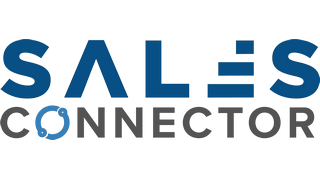Many successful small business owners are continuously looking to expand their customer base and grow their businesses. Business growth can be a difficult and long-term process, though. One of the foundational elements of growing a business is having access to a steady stream of sales leads. A lead is a person, or business if you have a company that sells to other businesses (B2B), that has an interest in the products or services you are selling.
Here are some tips for creating a system that will help you identify sales leads in your small business, and — with the right focus and effort — turn them into customers.
1. Identify Your Target Audience
The first step of lead generation is identifying your target audience. You can’t successfully reach and sell to your ideal customer if you don’t know exactly who that is, so it’s important to research your audience and come up with a clear picture of who they are, where they live, what they like to do, how much money they make, what their lifestyle and personality is like, etc.
If you don’t already have one, you should also create a comprehensive marketing plan as part of this step.
2. Pick Your Promotional Methods Wisely
In order to generate leads, you need a promotional plan that will get your products and services in front of members of your target audience. There are a number of ways you can promote your business, and again, you will want to use your marketing plan to identify the most effective methods for your business.
Some marketing ideas include an informational website, a blog, social media, speaking engagements, industry events, current customer referrals, pay per click (PPC) advertising, and traditional advertising.
3. Create a Sales Funnel
Once you know who you are targeting and have determined how best to reach them, you need to have a plan for collecting contact information. The first part of the process involves funneling all prospects to a standard form or landing page that encourages them to share their contact information, generally in return for a free gift, a coupon, a sample or some other value-added incentive.
At this point, it is vital to have a customer relationship management (CRM) database that will help you keep track of potential customers through the process.
4. Use an Email Newsletter to Build Relationships
Now that you’re in contact with prospects, it’s time to cultivate those relationships so you can take them from the lead stage through a sale (and eventually a repeat sale!). One of the best ways to create consistent communication with your prospects is through an email newsletter.
While you are planning your email marketing plan, make sure you are aware of and follow regulations that are a part of the CAN-SPAM Act.
5. Leverage Social Media to Connect and Engage
Social media provides a number of opportunities for small businesses to create conversations with prospective customers and generate new leads. You can create a Facebook page, Twitter profile, LinkedIn company page, Pinterest account or a YouTube page to attract and engage your audience, then funnel them through your process to become leads.
Plus, once you have leads in the system, you can use social media to talk to them and find out more about what they need and want. The more positive touchpoints a customer has with your business over time, the more likely he or she will be to trust your brand and eventually purchase from you.
Lead generation should be thought of as a long-term and continuous process. If you get an efficient system in place using the sales lead tips above, you can streamline the lead generation process and increase your opportunities for business growth.
This article originally appeared on TheBalanceSMB.



